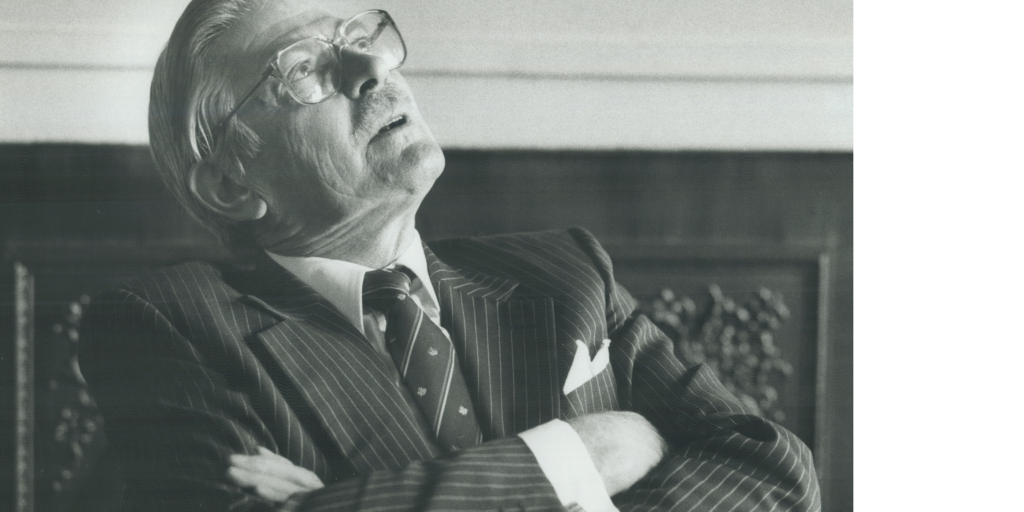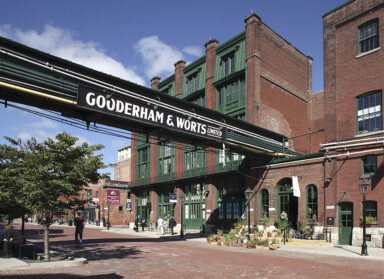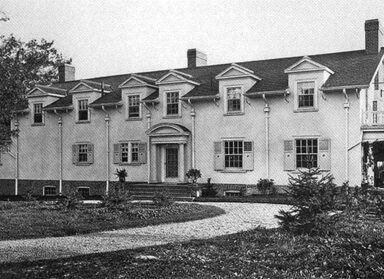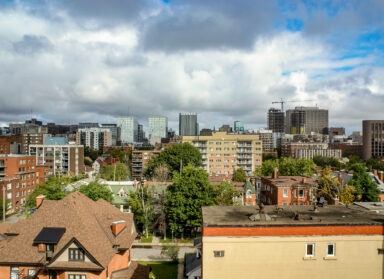This Heritage Week, I’d like to remember the Brigadier, or the Brig, as he was known, for the lessons he taught me.
Brigadier General John McGinnis was a larger-than-life figure. He was among the troops that liberated the Netherlands during the Second World War, and then after retirement he began a second career in the then unlikely field of heritage conservation. I met him first when he was the managing director of the Toronto Historical Board, a position that he held for over thirty years. He was my boss and the only person I’ve ever called sir.
After I was hired, he quickly directed me to go to Spadina House, then a private residence, with the strict instruction that the house was to be converted to a public museum, ready for a formal opening in less than a year. My provisional drafting table was set up in the billiards room, with tea provided by the maid, still in service. The Brig’s mandate was that the house should be conserved exactly as it was, with its half-emptied matchboxes, bizarre collection of objet d’art, and abundance of spare furniture pushed into the hallways. The house’s final owner, Mrs. Austin, took her television and left all else behind. The only things that the Brig agreed to change were the wallpapers and the fabrics, lest the family be embarrassed by their decrepitude.
The Brig had a sense of the appropriateness of things and each decision he made was measured, determined, and grounded in a sense of a strong moral obligation. Every Toronto Historical Board report that was written to City Council was reviewed and signed by him, and he was present at every meeting at City Hall if an issue related to heritage was discussed. For decades, the Brig was the face of heritage in Toronto and he organized that presence with a military exactness. He had to negotiate with many doubtful and reactionary councillors and demonstrate that a heritage department in the city could be handled with little cost and that it was a matter of civic pride and Canadian patriotism.
Of course, the Brig had his detractors, but his achievements were instrumental. He restored many of the historic sites in the city, like Mackenzie House, Gibson House, and Colborne Lodge. Together with John Sewell and Susan Richardson, he introduced the first inventory of heritage properties in 1973, two years before the creation of the Ontario Heritage Act. The Brig was present when, on the advice of Jane Jacobs, they tore down the fence around 243 Sherbourne Street, the historic home of Enoch Turner, to stop its demolition.
What I admired most about the Brig was his sense of solid leadership. He knew that the buck stopped with him and he took full responsibility for his actions and the actions of any of his staff in the department he created. Clear, simple leadership is such an admirable trait.
The only person who could direct the Brig was his beautiful wife Carole. I remember working at the Stanley Barracks, where the Toronto Historical Board was located, on an incredibly hot summer day. Carole appeared wearing a huge broad brimmed hat and told the Brig that it was simply too hot for people to work and he should send everyone home. Dutifully, we were all instructed to take the day off.
I started working at the Toronto Historical Board, ominously, the same day that Eric Arthur died in 1982, and the Brig retired shortly after. The Board was founded in the late 1950s continued until the amalgamation of the city in 1998. At that point, it was divided into Heritage Toronto on one side and City Planning on the other, an outcome a bit like that predicted for Solomon’s baby. While this led to separations, in many ways the greatest loss was the visibility and accountability that the Brig so admirably represented. There was a face, a presence, and a rectitude that justified an interest in heritage.
On heritage week, I’d like to thank the Brig for the remarkable example he set, which we can all learn from.
photo courtesy of Toronto Reference Library




